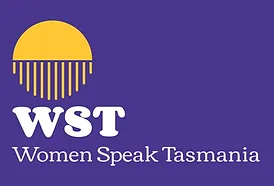LGBT+ is an ‘inclusive’ way to represent all the different identities in the longer acronym, says the BBC. What nonsense: the reality is that while lesbians and gay men often get lumped together we actually have little in common. It’s time for lesbians to break free of the LGBT+ label.
As the LGBT+ acronym has expanded in recent years to become more ‘inclusive’, many lesbians like me have come to feel less and less included. The umbrella term takes in all manner of sexual and gender identities, most of which have absolutely nothing to do with being same-sex-attracted. As a result, lesbians have been sidelined.
This isn’t a new phenomenon. When I came out in 1977, there were so few of us that we tended to stick together. But in LGB groups, gay men dominated in numbers – and in other ways, too. This meant that lesbians often got ignored, even if others within the gay community didn’t realise it. The pretence that we were all one happy family was set out in the Gay Liberation Front (GLF) manifesto of 1970: “We cannot carry out this revolutionary change alone. To build this alliance, the brothers in gay liberation will have to be prepared to sacrifice that degree of male chauvinism and male privilege that they still all possess.”
Did these sacrifices happen? Not exactly. Bev Jackson, who served as the spokeswoman for the GLF, said she and the other lesbians became so sick of the sexism from some gay men that they soon split to form their own group, Women’s Gay Liberation. The organisation focussed on supporting the feminist movement in order to highlight the way that sexism impacted on women and girls in general, and lesbians in particular. They also organised protests, demonstrations, and community events to fight for lesbian rights and visibility.
In recent years, with the LGBTQIA2S+ ‘community’ firmly in the grip of gender ideology, sexism has once again reared its ugly head – this time under the guise of transgender inclusion. Lesbians have been scorned and treated badly. We have been accused of bigotry and hatred because we don’t want to share female-only spaces with biological males. Even at Pride, we aren’t safe. At Manchester’s Pride event in 2018, there were loud cheers when someone with a microphone yelled out that protesters against the trans takeover of Pride should have been dragged off by their “saggy tits”.
Perhaps it’s no surprise that many lesbians want an amicable divorce from gay men; we feel we’ve been bunched together when our needs are very different. It’s a relationship in which women are always going to be on the back foot, with men’s needs coming first.
While it is true that gay men have been criminalised, and experienced hellish suffering and prejudice during the Aids crisis, lesbians have also had to deal with the sexism that has plagued women for centuries – including from gay men. There are shared goals common to lesbians and gay men. But there are also plenty of points on which we disagree, and, for reasons of self-interest, we are often set against one another.
However there is, at the same time, a growing solidarity between us, because of the threat of gender ideology. Although they made a slow start, a number of gay men have been passionately supporting the rights of lesbians to assemble without the presence of so-called trans women. Thus far, the demands of genderists – those who think a person can change their sex – have mainly affected women. But, as gender ideology has swept across the western world, trans men have begun to pop up on Grindr and other dating apps.
This situation has come to a head with the BBC show, I Kissed a Boy, fronted by Dannii Minogue. On the latest series of the show, one of the ‘men’ is transgender. ‘I‘ve been through 16 years of my life as a girl. It’s aged me, but in a good way,’ says Lars, who says they/them ‘felt like a gay guy trapped in a woman’s body.’
Unsurprisingly, there has been a great deal of consternation at Lars’s inclusion. Would a gay man feel comfortable hooking up with them? Some are going as far as comparing the situation to conversion therapy. I can understand why. The concept of same-sex attraction has been chipped away at.
Gareth Roberts, who wrote about I Kissed a Boy for these pages, told me he “had just assumed that gay men would look at what was happening to lesbians and say ‘No’ alongside them. But bog-standard male entitlement runs deeper than I thought”. As a result, it has taken gay men longer than us lesbians would have liked for them to see the problem with assuming that gay and trans rights are always compatible. Perhaps, then, if any good can come from this dire BBC show, it is that gay men are coming around to the concerns of lesbians. We have nothing against trans identified individuals. But it is high time to recognise that gay men, lesbians and transgender people are different.
What’s the solution? I think we need an LGBT break-up: lesbians like me and gay men should go our own way, even if we remain comrades-in-arms on certain issues to protect the rights we fought long and hard for.
As Dennis Kavanagh, founder of the Gay Men’s Network, told me: “We have come together in a state of emergency.” Now both groups can stop pretending we have anything in common other than being same-sex-attracted. But this doesn’t mean we can’t fight the good fight together. It’s so refreshing to have so many gay men on our side after decades of silence.
By Julie Bindel
Julie Bindel is a feminist campaigner against sexual violence. She is the host of The Lesbian Project podcast, with Kathleen Stock.
Source: The Spectator
